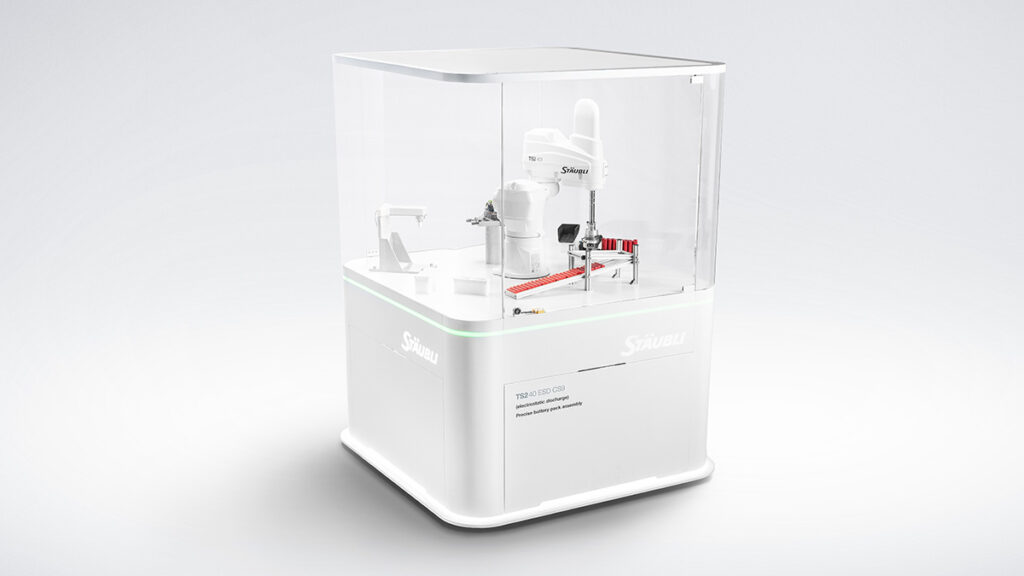Digital transformation will be one of the major topics and trends dominating this year’s Automatica. At Stand 359 in Hall B5, Stäubli Robotics will demonstrate the facility and speed with which its four- and six-axis robots can be integrated into digital environments.
The trade fair will also highlight the pace at which digital integration is making inroads into all industries around the globe. This is a development that comes as little surprise to Adrien Brouillard, Global Head of General Industry Stäubli Robotics: “The benefits of digitalisation are so far-reaching in almost all areas of production that all manufacturers would be well advised to incorporate this technology without delay. Our comprehensive robot portfolio is already making an impact in digital applications of all kinds. We will be delivering the proof of this at Automatica.”
See the digital twin in action
Stäubli will show what the digital twin looks like, in detail and in practice, in what is destined to be one of the event’s highlights. The digital twin is a virtual replica of a physical demo cell, in which a SCARA robot of the TS2 series with ESD (electrostatic discharge) protection is entrusted with the handling of battery cells.
This Stäubli application provides only indirect evidence of the impressive performance of these four-axis models in terms of their dynamics and precision. The focus is rather on the digital twin, which is visualised alongside the real application. Visitors will be able to see for themselves just how conveniently a virtual trial run allows optimisations and adjustments to be made, without risk or error, before being implemented on the actual application.
Whether discrepancies become apparent in the simulation within the Siemens NX Mechatronic Concept Designer or when programming the PLC or robot, errors and the need for time-consuming corrections can reliably be avoided or cost-effectively eliminated from the outset without resulting in downtime in the cell later on. Virtual trial runs and virtual engineering also offers many other advantages, including shorter commissioning times, parallel development of plant components across sites in different countries, and pre-startup training of employees on the digital twin.
Open architecture of the robot controller facilitates integration
Stäubli Robotics Global Head of General Industry Brouillard: “Thanks to the open architecture of our CS9 robot controller, we have been able to rapidly create appropriate interfaces, for example for connection to Siemens SIMIT. This means all our robots can be immediately integrated into the Siemens world. All the usual advantages of virtual engineering and virtual commissioning are available here as well.”
The robot programming can be done with Stäubli VAL3 or uniVAL pi via the Siemens PLC; the visualisation can be done with the Stäubli Robotics Suite or Siemens NX Mechatronic Concept Designer; and a virtual PLC can be simulated with PLCSIM Advanced and virtual fieldbus to the robot. Whichever option is chosen, Stäubli has the virtual connection for every setup. Come see at Automatica 2023!
There’s plenty of other robotics editorial on our sister site, Electronic Specifier! Or you can always join in the conversation by commenting below or visiting our LinkedIn page.
